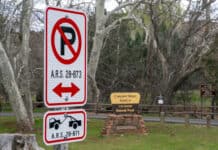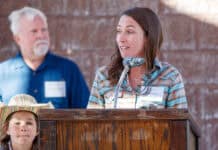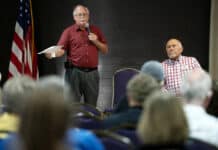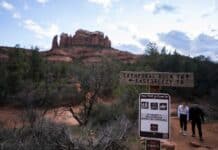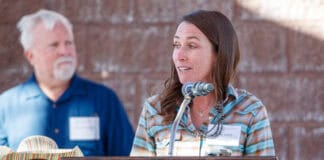
Ivan Kadey and “Baba” Vusi Shibambo’s friendship was born in a utopian vision that emerged from the dystopian reality of Apartheid-era South Africa.
On Friday, Feb. 9, at 7 p.m. at the Mary D. Fisher Theatre, the audience can experience both halves of that story when Kadey, the surviving member of legendary punk band National Wake, reunites with Sedona resident Shibambo for a live musical set in conjunction with a screening of Mirissa Neff’s 2022 documentary “This is National Wake.”
“In 1979, South Africa’s Apartheid regime kept blacks and whites separate and unequal. But three young men — Ivan Kadey, a white guitarist from Johannesburg’s Jewish side, and Gary and Punka Khoza, two black Shangaan brothers from Soweto — dared to launch National Wake,” the press release for the event stated. “In a time and place where it was illegal for these young musicians to play or live together, their band and its fans fought back with music. They smashed every law to rebel — and were documented with remarkable foresight and nerve by this film’s co-producer Nadine Kadey and cinematographer Robin Muir, in astonishing Super 8.”
Neff said that one of the major lessons of National Wake is that people can create the world that they want to see in small and large ways.
“My parents met in New York in the ’60s, but it was a time it was illegal in many places in America for blacks and white to marry,” Neff explained. Her mother immigrated from Barbados and married a Jewish man whose family had escaped persecution in Eastern Europe. “It’s hard to wrap one’s head around … the fact that Apartheid happened within our lifetimes. In some ways, it feels like ancient history, but it wasn’t that long ago, it was only in the ’90s that it was abolished. I felt this deep connection to the story of National Wake because of my background, and the parallels between these black and Jewish folks trying to get together and create the lives that they wanted, that were outlawed by the government that they were living under.”
People’s ability to come together across culture divides to embrace joy can be an act of rebellion, Ivan Kadey explained.
“For me, the biggest thing about National Wake is however difficult it was to keep the band together and deal with the pressures that were coming at us, the act of getting up and playing that music was joyous,” Kadey said. “A lot of the substance of the music is about the situation, but it was essentially a dance band. In the movie [Shibambo] says,‘When we were dancing, there was no Apartheid.’ That was the greatest part of being in that band was that day did transcend the situation that existed.”
“I wanted people to be immersed in that moment and see what it feels for in this visceral way,” Neff said of her choice to eschew the talking head format of a typical rock n’ roll documentary in order to place the Super 8 footage of the band shot by Nadine Kadey and Muir at its center. “I interviewed Ivan countless times for this film, and we got used to each other and had a more intimate connection and friendship. I realized when the cameras were off, he was more candid and more revealing about some of the more challenging things about the experiences [of] National Wake. I’ve done a lot of radio reporting, and it’s interesting what a camera can do to people … That was part of the impetus to move away from talking heads.”
Vusi Shibambo
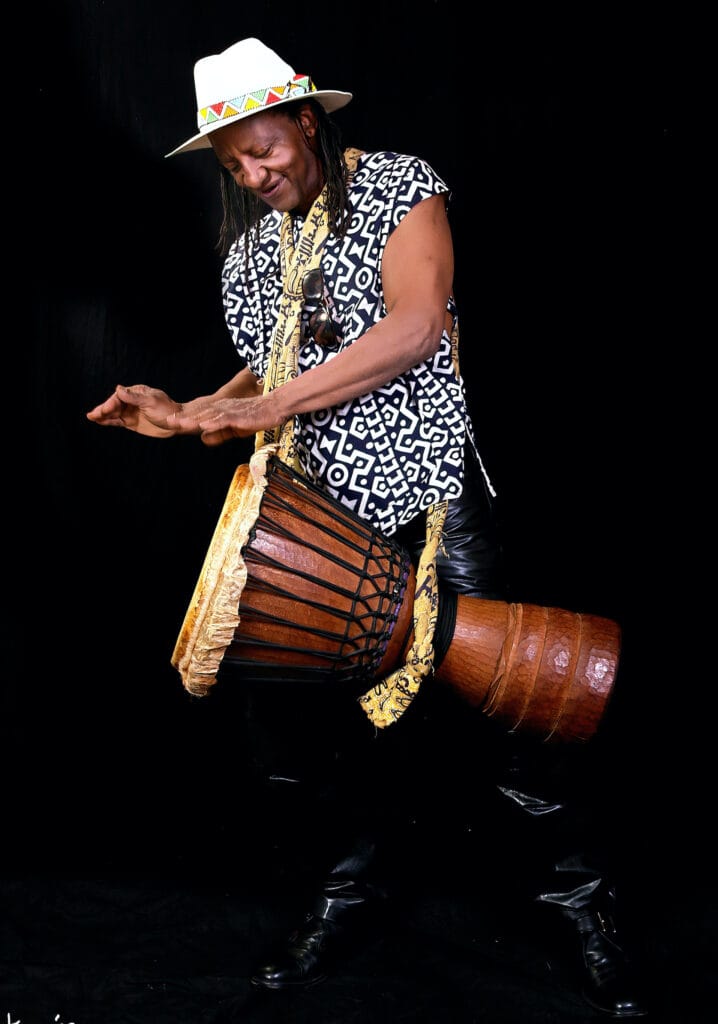
Photo courtesy of Larry Kane
“[Shibambo] was in some respects a ‘homeboy,’ to use the American term,” Ivan Kadey said. “He was from [Gary and Punka Khoza’s] neighborhood … and he came on a type of contract, I suppose, to learn music, in exchange for basically being an apprentice to Gary, to look after him, do whatever had to be done. [Shibambo] had such an amazing spirit as a 17-year-old kid, he came out of the ghetto, so to speak, into this house and was so open and excited to be part of some alternative lifestyle. He started playing quite a crucial role in the band … he became the MC at gigs, he would get up and introduce the band. A big part of the crew loading up and unloading and setting up, and was such a personality.”
“[Shibambo] was a poet with such amazing use of words,” Ivan’s wife Nadine continued. “I met his parents [who] were both amazing, eloquent people. We became deep friends. The bones of that band are so deep … There were two other roadies that lived with us in the house. We have each other’s backs for life. [Shibambo is] incredibly articulate and eloquent and he can capture decades and vast swathes of everything and put them in words.”
“National Wake was the new light on the hill,” Shibambo said. “National Wake gave people permission to recognize each other, to respect each other [and] to know that we are all the same, we can live in one house and make a difference for a country. I was very fortunate to be part of that group.”
Shibambo also recalled another formative experience: Listening to the Apollo 11 moon landing in July 1969 over the radio.
“Listening to the radio with my family, I still remember the whole [event],” Shibambo said. “I’ve always looked up to America. America is my hope, my home [and] my inspiration. I’ve always believed in America and it makes me feel so sad to see people trash it. It’s beautiful she’s given us so much hope.”
For more information, visit SedonaFilmFestival.org or call (928) 282-1177. Following the showing, SIFF will host a question-and-answer session


